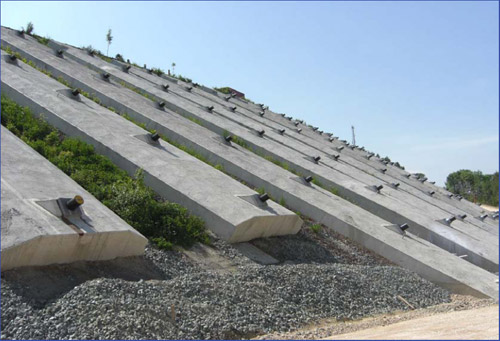Discover the Complete Range of Williams Anchors for Superior Ground Stablizing
Discover the Complete Range of Williams Anchors for Superior Ground Stablizing
Blog Article
Reliable Rock Anchors for Secure and Secure Foundations
In the world of civil engineering, the duty of reliable rock anchors can not be overstated, as they are pivotal in developing protected and secure structures across a selection of applications. Recognizing the different types of rock supports, their details applications, and the ins and outs of installation and maintenance is essential for optimizing their efficiency.
Kinds Of Rock Anchors

Passive supports rely on the weight of the framework and the surrounding dirt or rock to give resistance. Energetic anchors, on the various other hand, include the application of tension via a high-strength cable television or rod, developing a pre-stressed problem in the anchor - Williams Anchors.
Grouted anchors are another considerable classification, in which a steel bar or cord is placed right into a drilled opening, complied with by a cementitious grout. When healed, the cement bonds with the surrounding rock, developing a robust anchoring system. Each kind of rock support supplies distinct advantages based upon the particular geological conditions and structural requirements, consequently playing a crucial function in the overall honesty and long life of built facilities.
Applications in Building
Rock supports play a critical role in different construction applications, giving vital support and security in varied atmospheres. These innovative options are used in projects varying from large framework advancements to smaller sized property frameworks. Among the main applications of rock supports remains in the stablizing of inclines and retaining walls, where they aid prevent dirt erosion and keep structural stability.
Furthermore, rock supports are instrumental in protecting structures for bridges, passages, and skyscrapers, ensuring they can stand up to side forces such as wind and seismic activity. Their versatility enables installation in difficult geological conditions, making them ideal for tasks in hilly or rough surfaces.

Secret Selection Requirements
Picking the ideal rock support for a details application calls for careful factor to consider of several vital requirements. Firstly, the geological conditions of the website have to be thoroughly examined. Comprehending rock kind, toughness, and stability is essential to make sure that the support will do successfully under load conditions.

One more crucial element is the this contact form deterioration resistance of the anchor products. In settings revealed to moisture or chemicals, making use of corrosion-resistant products will certainly lengthen the life expectancy of the anchors and keep structural honesty in time.
In addition, the support's setup approach should straighten with the project's requirements and restraints. Relieve of installment, in addition to the potential influence on bordering structures, need to be thought about.
Setup Methods
Reliable installation strategies are critical for the effective efficiency of rock anchors. Appropriate installation ensures that the anchors accomplish the desired load-bearing capability and stability within the geological problems. The primary step in the installation procedure entails site analysis, where geological studies identify the rock kind, problem, and any kind of prospective challenges.
Once the website is evaluated, the ideal drilling technique need to be picked-- alternatives consist of rotary exploration, diamond boring, or percussion boring. The option depends on rock solidity and ecological considerations. Exact exploration deepness and angle are crucial to make certain that the supports align with structural requirements and load circulation.
After drilling, the next phase involves cleaning the borehole to remove debris, which can compromise bond strength. Following this, the anchor is put, and if called important link for, a grout or material is injected to enhance bond. The treating time of these products have to be followed, ensuring that the supports achieve complete strength prior to any kind of load is applied.
Maintenance and Evaluation
Appropriate upkeep and examination of rock supports are necessary to guarantee their long-lasting performance and integrity (Williams Anchors). Routine evaluations assist determine any type of potential concerns, such as deterioration, variation, or architectural exhaustion that could endanger the integrity of the anchoring system
Routine assessments must be carried out at defined periods, taking into account ecological aspects and the details application of the rock supports. Aesthetic evaluations should concentrate on the revealed areas of the supports, inspecting for indicators of corrosion, splits, or various other abnormalities. Furthermore, it is important to review the surrounding geological problems to detect any shifts in dirt or rock that may affect anchor performance.
In some situations, advanced techniques such as tons testing or non-destructive testing may be called for to determine the supports' load-bearing capacity and total health. Appropriate documentation of evaluation findings, upkeep tasks, and any kind of repairs or substitutes done is important for recurring analysis and compliance with industry criteria.
Verdict
To conclude, reputable rock anchors play a vital role in making sure protected and stable structures throughout different building and construction applications. By effectively transferring lots and enhancing stability against side forces, these supports contribute dramatically to the durability and stability of structures such as bridges, passages, and maintaining walls. Strategic option, installment, and maintenance of rock anchors are vital for maximizing performance and securing public security, inevitably highlighting their significance in modern engineering practices.
Report this page